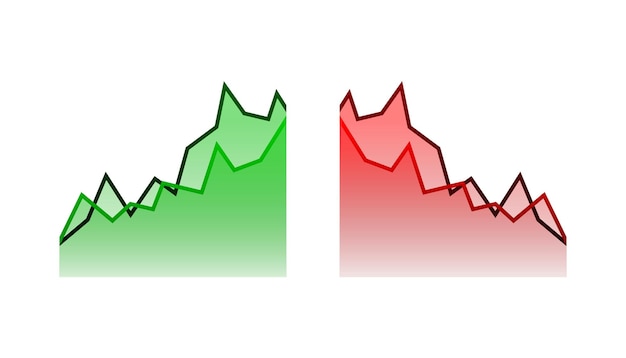Dollar-Cost Averaging: A Beginner’s Guide to Investing Consistently

Dollar-cost averaging is an investment strategy where you invest a fixed amount of money at regular intervals, regardless of the asset’s price, helping to reduce risk and potentially increase returns over time.
Embarking on your investment journey can feel overwhelming, but strategies like dollar-cost averaging offer a structured and less stressful approach to building wealth over time.
Understanding Dollar-Cost Averaging
Dollar-cost averaging (DCA) is a popular investment technique designed to mitigate risk and make investing more accessible. It involves investing a fixed sum of money at regular intervals, regardless of the asset’s price fluctuations.
What is the Core Principle of DCA?
The core principle behind DCA is to reduce the impact of volatility on your investments. By spreading out your purchases, you’re buying more shares when prices are low and fewer shares when prices are high.
This strategy helps avoid the pitfall of trying to time the market, which can be notoriously difficult and often leads to missed opportunities or costly mistakes.

Why is DCA Appealing to Beginners?
DCA is particularly appealing to beginners for a few key reasons. It simplifies the investment process, removes the emotional pressure of making large, one-time decisions, and encourages consistent investing habits.
- Reduces Emotional Investing: DCA helps remove emotions from investment decisions.
- Encourages Consistency: It promotes regular investment habits, crucial for long-term growth.
- Mitigates Risk: By spreading out purchases, DCA reduces the overall risk.
In conclusion, dollar-cost averaging is a pragmatic approach that can instill discipline and potentially enhance returns while reducing the stress associated with market fluctuations.
The Mechanics of Dollar-Cost Averaging
To effectively implement dollar-cost averaging, it’s essential to understand the mechanics involved. This strategy requires a consistent approach and a clear understanding of the assets you’re investing in.
Setting Up Your DCA Plan
The first step is to determine how much you can afford to invest regularly. This amount should be a fixed sum that you’re comfortable investing regardless of market conditions.
Next, choose the intervals at which you’ll make your investments. Common intervals include weekly, bi-weekly, or monthly.
Choosing Investments for DCA
When using DCA, it’s vital to select investments that align with your long-term financial goals. Stocks, ETFs, and mutual funds are all suitable options, depending on your risk tolerance and investment horizon.
- Stocks: Investing in individual stocks can provide significant returns, but it also carries higher risk.
- ETFs: Exchange-Traded Funds offer diversification across various assets and sectors.
- Mutual Funds: Professionally managed funds offer diversification and are suitable for beginners.
Wrapping up, understanding the mechanics of DCA involves setting up a plan that aligns with your financial capacity and investment goals, ultimately simplifying the investment process.

Dollar-Cost Averaging Vs. Lump-Sum Investing
One of the most debated topics in the investment world is whether dollar-cost averaging is superior to lump-sum investing. Both strategies have their advantages and disadvantages, depending on market conditions and individual circumstances.
What is Lump-Sum Investing?
Lump-sum investing involves investing a large sum of money all at once. Historically, lump-sum investing has often outperformed DCA, particularly in consistently rising markets.
However, it is more volatile, since you’re buying lots of shares at the start which could decrease.
When Does DCA Outperform Lump-Sum?
DCA tends to perform better than lump-sum investing in declining or highly volatile markets. By spreading out purchases, DCA reduces the risk of investing a large sum right before a market downturn.
- Declining Markets: DCA allows you to buy more shares at lower prices as the market falls.
- Volatile Markets: DCA reduces the risk of making a large, one-time investment at an unfavorable price.
- Psychological Comfort: Some investors prefer DCA because it reduces the stress of making large decisions.
Comparing these two approaches, dollar-cost averaging and lump-sum investing cater to different market conditions and investor preferences. Therefore, understanding the nuances of each strategy is paramount in financial planning.
The Psychological Benefits of DCA
Beyond the potential financial advantages, dollar-cost averaging offers several psychological benefits that can make investing more manageable, especially for beginners. It provides a sense of control and reduces anxiety associated with market volatility.
Reducing Fear and Greed
One of the primary psychological benefits of DCA is its ability to mitigate the emotional impact of fear and greed. It dampens the impulse to make impulsive decisions based on short-term market movements.
This contributes to a more rational, methodical investment strategy. This then prevents impulsive market plunges.
Building Confidence Over Time
Regularly investing through DCA can instill a sense of accomplishment and confidence over time. As investors see their portfolios grow steadily, driven by consistent contributions, they develop a stronger commitment to their long-term financial goals.
In summary, the psychological advantages of dollar-cost averaging, such as reducing emotional stress and fostering confidence, play a significant role in making investing more approachable and sustainable for individuals across various experience levels.
Common Mistakes to Avoid with DCA
While dollar-cost averaging is a relatively simple strategy, there are several common mistakes that investors should avoid to maximize its effectiveness. These mistakes often stem from misunderstanding the strategy’s principles or failing to maintain consistency.
Stopping Investments During Downturns
One of the most significant mistakes is halting investments during market downturns. It’s crucial to continue investing regularly, regardless of market conditions. This ensures you’re buying more shares when prices are low, which is a core advantage of DCA.
This consistent investment allows your dollar-cost averaging to succeed in the long run.
Trying to Time the Market
Another common pitfall is attempting to time the market by adjusting investment amounts based on perceived market tops or bottoms. DCA works best when investments are made consistently and systematically, without trying to predict market movements.
- Maintain Consistency: Continue investing regularly, regardless of market conditions.
- Avoid Market Timing: Do not try to predict market movements or adjust investment amounts accordingly.
- Stay Focused on Long-Term Goals: Maintain a long-term perspective and avoid making decisions based on short-term fluctuations.
Ultimately, avoiding common mistakes, such as stopping investments during downturns or attempting to time the market, is critical for realizing the full benefits of dollar-cost averaging. Staying disciplined and focused on long-term goals ensures that the strategy can effectively mitigate risk and enhance investment outcomes.
Real-Life Examples of DCA in Action
To better illustrate the effectiveness of dollar-cost averaging, let’s explore some real-life examples. These scenarios will highlight how DCA can perform under varying market conditions and demonstrate its practical advantages.
Scenario 1: Investing in a Volatile Stock
Consider an investor who decides to invest $200 per month in a volatile tech stock. Over a year, the stock price fluctuates significantly.
By the end of the year, the investor has acquired more shares at lower prices during market dips. This lowered the average cost per share over time.
Scenario 2: Investing in a Stable ETF
Now, consider an investor who uses DCA to invest in a stable, broad-market ETF. They invest $300 per month, and the ETF experiences moderate growth.
- Consistency Pays Off: Over time, the investor accumulates a substantial number of shares in the fund.
- Long-Term Growth: The consistent approach, combined with the ETF’s growth, leads to impressive results.
These real-life examples demonstrate that dollar-cost averaging can be a powerful approach in both volatile and stable markets. By consistently investing, individuals can navigate market fluctuations and achieve their long-term financial goals.
| Key Point | Brief Description |
|---|---|
| 💰 Consistent Investment | Invest a fixed amount regularly, irrespective of market conditions. |
| 📉 Risk Mitigation | Reduces the impact of market volatility by averaging the cost per share. |
| 🧘 Psychological Comfort | Minimizes emotional decision-making and fosters investment discipline. |
| 📈 Long-Term Growth | Supports steady portfolio growth by taking advantage of market cycles. |
Frequently Asked Questions
▼
The ideal interval depends on individual preferences and cash flow. Monthly and bi-weekly intervals are common choices, ensuring regular investments without requiring constant monitoring.
▼
No, dollar-cost averaging does not guarantee profits. It reduces risk by averaging the cost per share over time, but investments are still subject to market fluctuations and potential losses.
▼
DCA is suitable for a broad range of investments, including stocks, ETFs, and mutual funds. It is especially useful for volatile assets where price fluctuations can be significant.
▼
In a bear market, DCA allows investors to buy more shares at lower prices. This strategy can lead to substantial gains when the market recovers, as the average cost per share is reduced.
▼
The biggest challenge is maintaining discipline and consistency. It requires investors to continue investing regularly, even when the market is down or when they are tempted to time the market.
Conclusion
Dollar-cost averaging is a valuable strategy for both beginner and experienced investors. Its disciplined approach to investing reduces risk, promotes long-term thinking, and can lead to steady portfolio growth. By understanding its principles and avoiding common mistakes, investors can effectively use DCA to achieve their financial goals.





